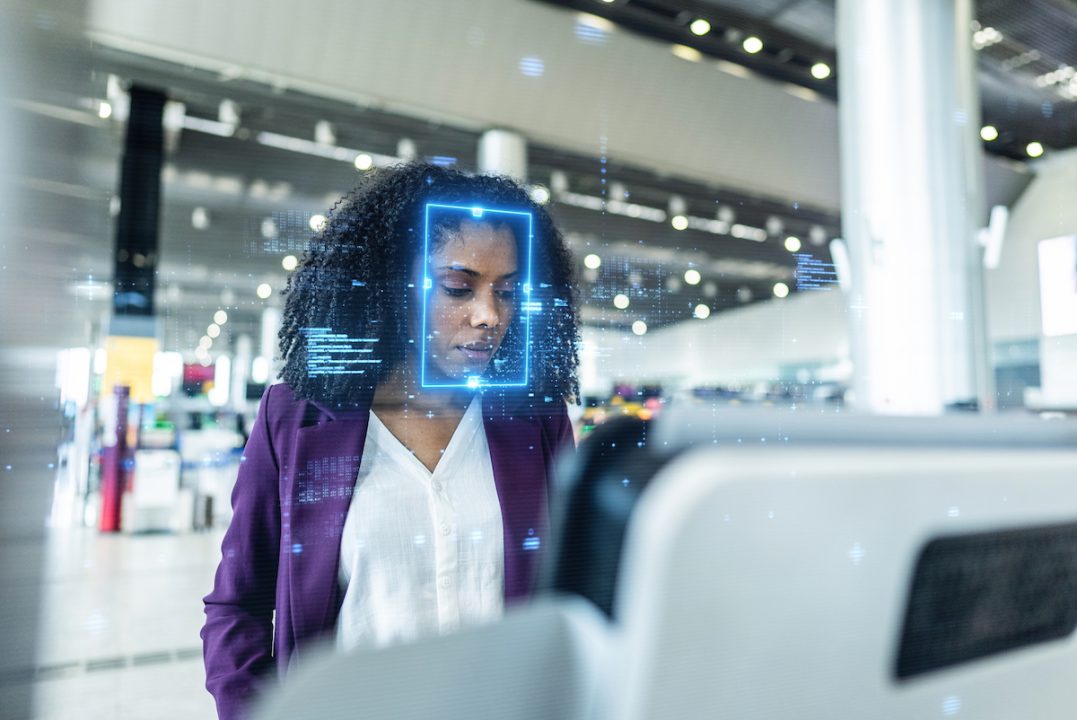
As the Trump administration begins enforcement of the Real ID Act next month, requiring Americans to carry enhanced identification to board domestic flights, the United Nations is preparing to execute an equally radical — and arguably complementary — transformation of global air travel. The International Civil Aviation Organization (ICAO), a UN agency, is leading what is already dubbed the “biggest [air travel] shake-up” in 50 years — scrapping boarding passes, eliminating check-in, and shifting to a fully digital, biometric system.
These plans are now under discussion at the ICAO Facilitation Conference 2025 in Doha, Qatar. As a founding and active member of ICAO, the United States is expected to align with and implement the forthcoming standards alongside other participating nations. Moreover, key elements of the UN-led framework are already being rolled out across major U.S. airports and border-control systems.
Face as Passport
According to The Times, the ICAO is introducing a global framework that will remove the need for both check-in counters and traditional boarding passes — whether printed or digital.
Instead, travelers will receive a Digital Travel Credential (DTS), also called a Journey Pass. This file, stored on a smartphone, will include passport data, flight details, biometric identifiers, and extras such as car rentals or seat upgrades.
Under this system, a passenger’s face becomes the boarding pass. No manual check-in is required. Once scanned, the system verifies identity, confirms travel status, and grants access at each stage of the journey.
Airports will use facial recognition at designated checkpoints. For checked baggage, the scan happens at bag drop. For carry-ons, it occurs at the pre-security gate.
ICAO expects this overhaul to be in place within two to three years, per the report.
The Conference
This week, the ICAO Facilitation Conference 2025 (FALC 2025) is underway in Doha under the theme “Facilitating the future of air transport: collaboration, efficiency, inclusivity.” The event brings together regulators, airport authorities, airlines, and technical experts to coordinate global policy on air travel infrastructure.
One of the central topics is “Agenda Item 2: Travel Document Integrity and Border Control,” which promotes a global approach to identity verification and border management. Delegates are asked to propose:
- standardization of travel documents in line with ICAO Doc 9303 on Machine Readable Travel Documents (MRTDs);
- new methods for identity checks at border control points;
- and faster procedures for processing passengers and crew.
These and related initiatives aim to strengthen international travel document security and create uniform systems for cross-border mobility.
Digital Identity and Automation
Another central topic is “Agenda Item 11: Innovation in Facilitation and Artificial Intelligence, which addresses digital identity, biometrics, and automation in border control.”
Discussions include:
- deployment of new technologies across global air travel;
- interoperability of digital identity systems;
- AI-based identity verification and passenger flow management; and
- coordination through ICAO’s Public Key Directory (PKD) and Traveler Identification Programme (TRIP).
The latter two programs play a foundational role in advancing digital identity in aviation. The PKD supports real-time authentication of electronic travel documents between countries. TRIP promotes biometric adoption in border processing. Together, they form the technical foundation for a unified, international digital identity system.
Delegates are expected to recommend future standards and frameworks to guide implementation.
U.S. Deployment of Facial-recognition Technology
While ICAO is discussing the updates to global standards, the United States has already expanded its own biometric infrastructure through the Biometric Entry-Exit program, led by U.S. Customs and Border Protection (CBP). Facial-comparison technology is now in use at 238 airports for inbound travelers, including all 14 CBP Preclearance locations and 49 departure points for international flights.
CBP says the system has processed over 697 million travelers. Facial recognition is also active at 55 outbound airports, 39 seaports, and pedestrian lanes at both the Southwest and Northern borders. The agency claims the program has blocked over 2,000 identity fraud attempts.
Meanwhile, the Transportation Security Administration (TSA) has begun piloting facial recognition for domestic flights. Facial recognition is now operational at several major airports, including Atlanta, Denver, and Los Angeles, with expansion underway. Though still labeled a pilot, TSA has deployed the technology at over 80 airports and plans to extend it to all federalized airports in the coming years.
AI in Airport Operations
In line with the UN agenda, U.S. airports and federal agencies are integrating artificial intelligence across nearly every layer of the passenger experience. Last December, the Department of Homeland Security listed 158 active AI use cases in its official inventory — more than twice the number reported last year. Of these, 29 were already in use and 10 more in development were flagged as impacting safety or individual rights. Nearly half of those involve facial-recognition or face-capture technologies.
Currently, TSA uses AI-powered scanners to flag anomalies during screening. Machine learning-enhanced CT scanners analyze baggage in real time. Facial recognition, paired with AI, tracks movement through airport checkpoints. These systems are active at hubs such as JFK, O’Hare, and Miami.
At the border, CBP uses AI to analyze travel patterns, bookings, and cargo data. The goal is to assess risk before the subject arrives.
Additionally, airlines increasingly rely on algorithms to predict maintenance issues, reassign gates, adjust staffing, and reroute passengers.
Global Expansion of Biometric Systems
Biometric systems are not limited to the United States. Dubai International Airport uses facial-recognition tunnels to allow passengers to pass through immigration in seconds without showing a passport. Singapore’s Changi Airport has rolled out end-to-end biometric processing for check-in, bag drop, immigration, and boarding. Similar programs are underway in Germany, the Netherlands, and Japan.
In the United States, Delta Air Lines has introduced biometric terminals at select airports, allowing eligible travelers to move from curb to gate using only their face. American Airlines and JetBlue have launched similar facial boarding programs.
These developments show that the shift toward centralized biometric infrastructure is not theoretical — it is already unfolding across key points of the global travel network.





